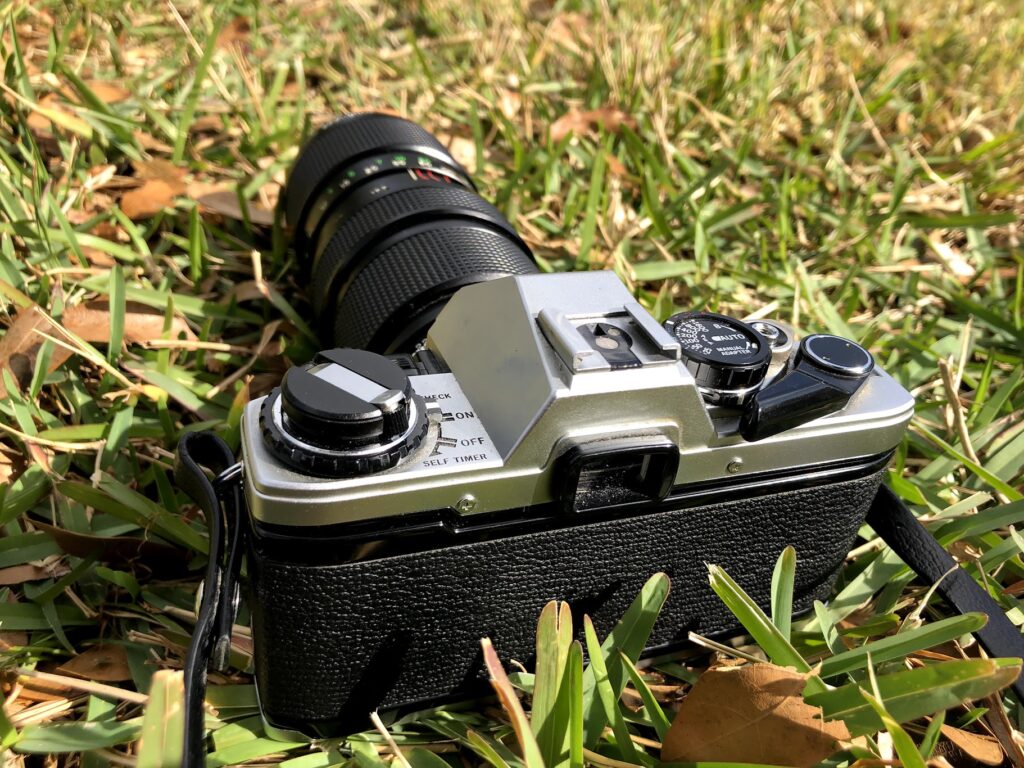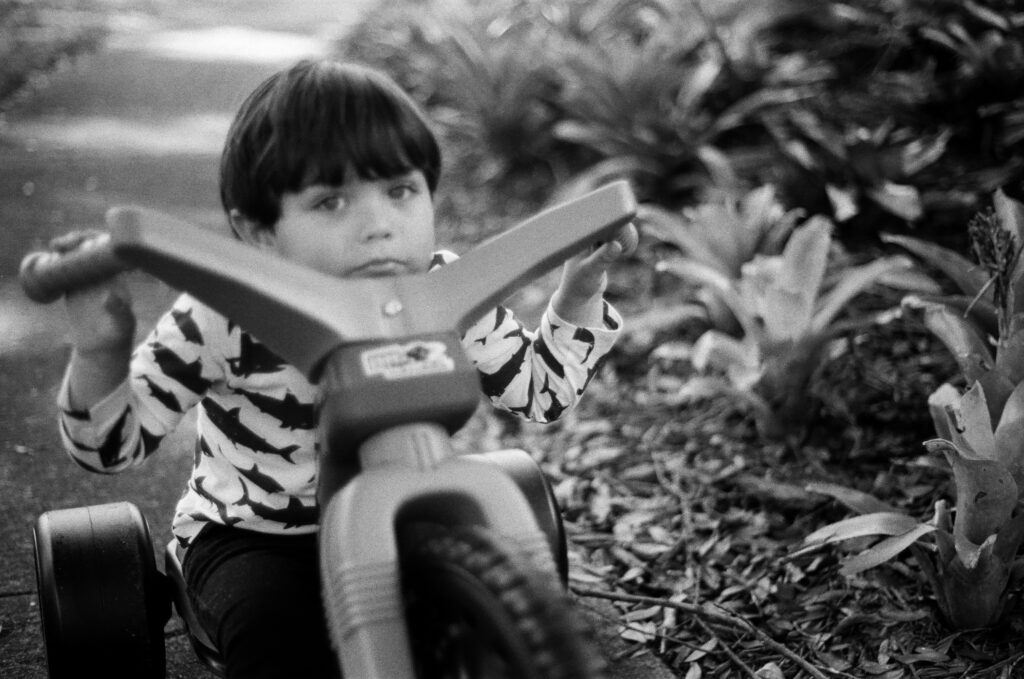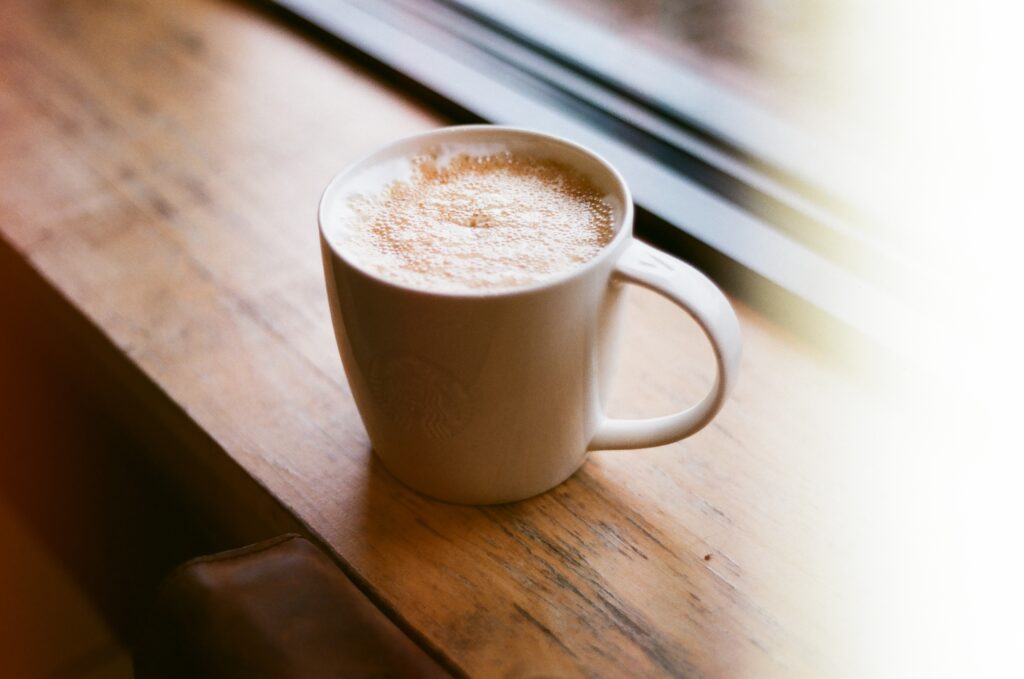I’ve spent years honing my digital photography skills, but when my wife’s grandfather gave me his old film camera at Christmas, I couldn’t wait to experiment.
This isn’t my first time using a film camera — since I’d used my mom’s Kodak on field trips back in the day (and who hasn’t used a disposable camera?) — but it definitely took some getting used to.
Luckily, it came with three lenses, a flash and the manual. All I had to do was replace the batteries and pick up some film.

I went through a couple rolls in as many days, but I learned something even in that short time. It’s important to plan out each shot carefully. I certainly didn’t want to waste my film. And that can sound weird when we’re talking about photos of my son — why would that be a waste?

Well, the settings and focus have to be right if I want to see exactly how this camera performs. That’s especially true if I want to showcase these moments in our home. Otherwise, they’re not much more than snapshots, which definitely have their place. But I’m going for something more.
So I learned to be patient. It’s important to have the camera with me, but I don’t have to take a photo every minute of every day.

Is the light just right? How will this look in black & white? (I did shoot a color roll, as well.) Yes, I’m still just learning the camera and testing it out, but I want each frame to be special. We have a luxury with digital that allows us to delete the bad ones. Is your thumb in front of the lens? (It shouldn’t be.) Delete. Someone blinking? (That’s OK.) Delete.
I’ve come a long way in my dozen or so years in photography. Even though I’m taking fewer shots now, I’m ending up with more incredible results. My clients tell me how relaxed and fun my sessions are. This comes from being able to spend less time looking at the camera and more time putting people at ease. Instead of fidgeting with dials and buttons (aside from the occasional lens change), I can pay more attention to details and talk you through poses or just listen to you — talk to me about your day or what your next big project is.
By the time it’s all over, you’ll think, how did two hours just fly by? And the best part is yet to come: seeing the final product.
There’s something really special about going back to the basics with film, carefully composing and setting up each shot as if it can’t be redone (and can’t be reviewed until much later). It gives me a better appreciation for what pioneers in photography experienced, yet it also puts me in a mindset that I can use to continually improve my digital photography skills.
